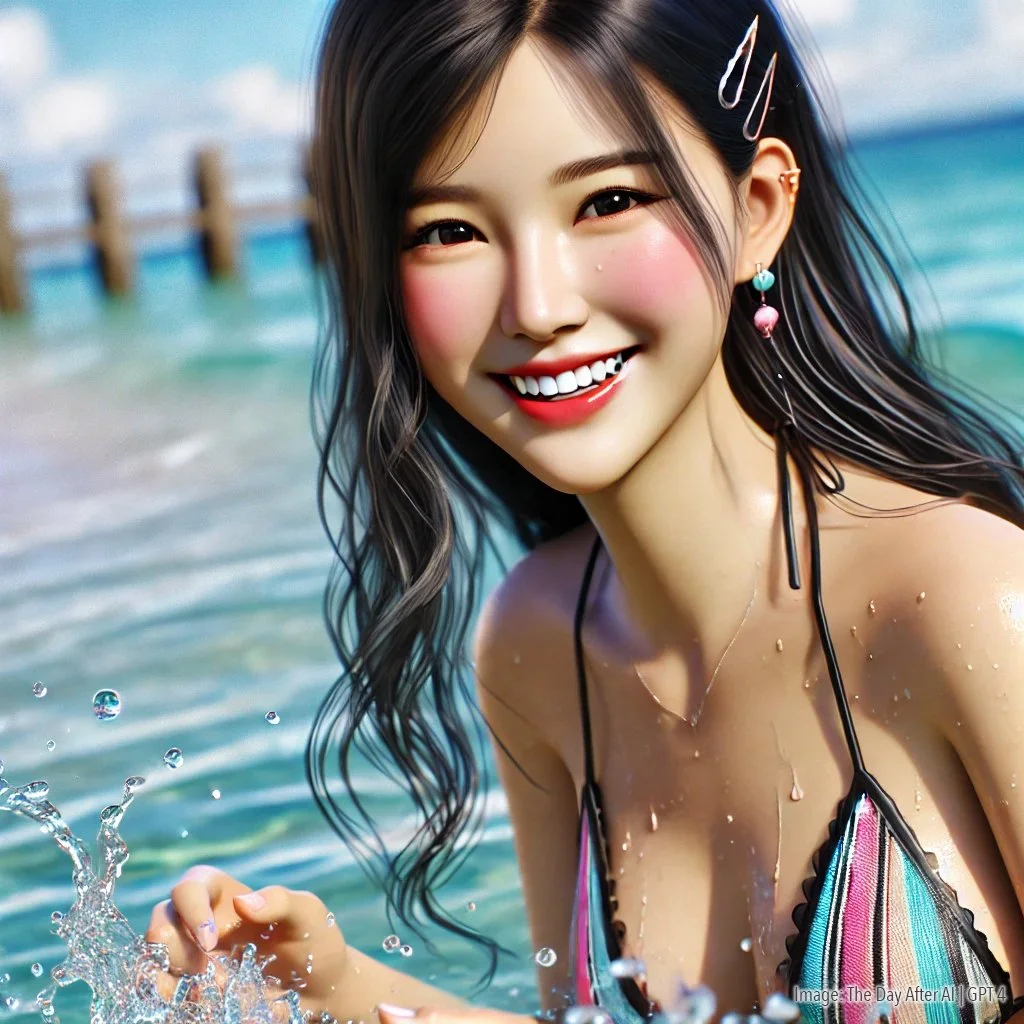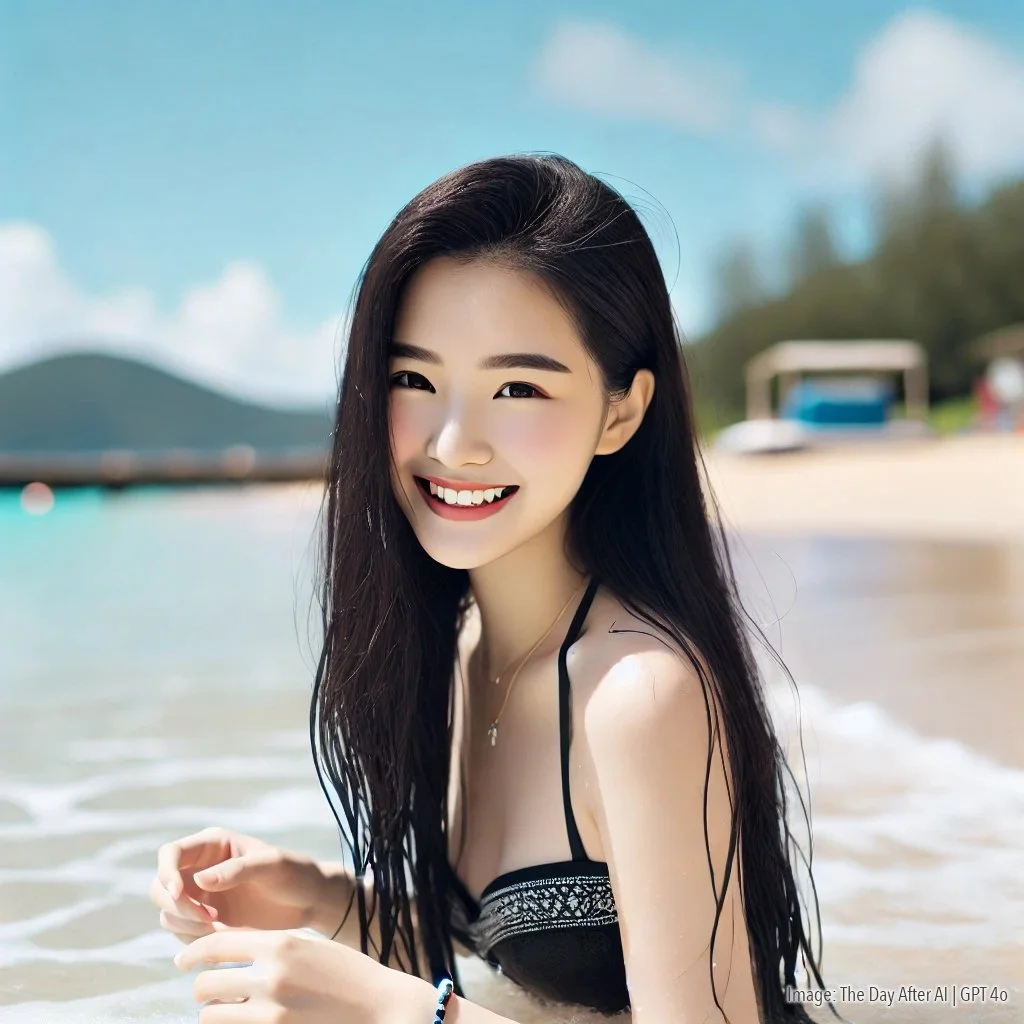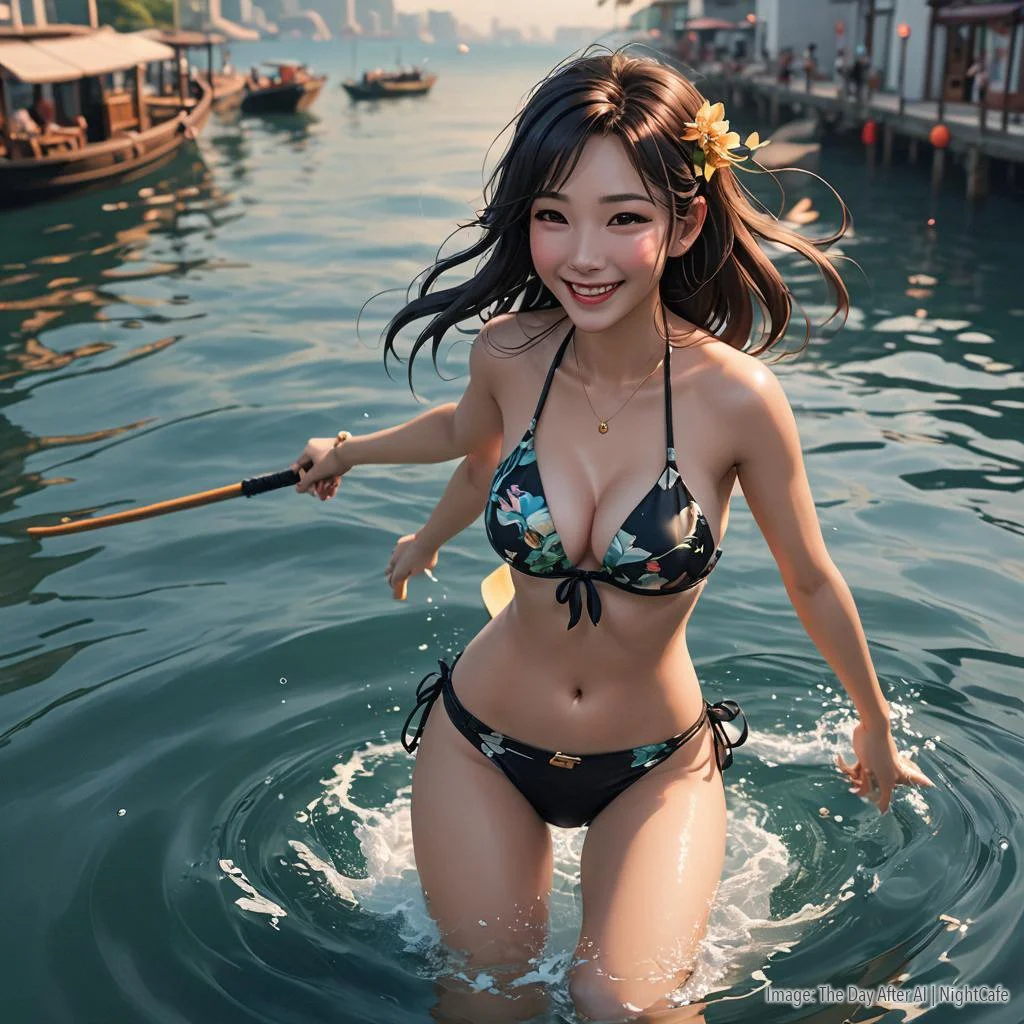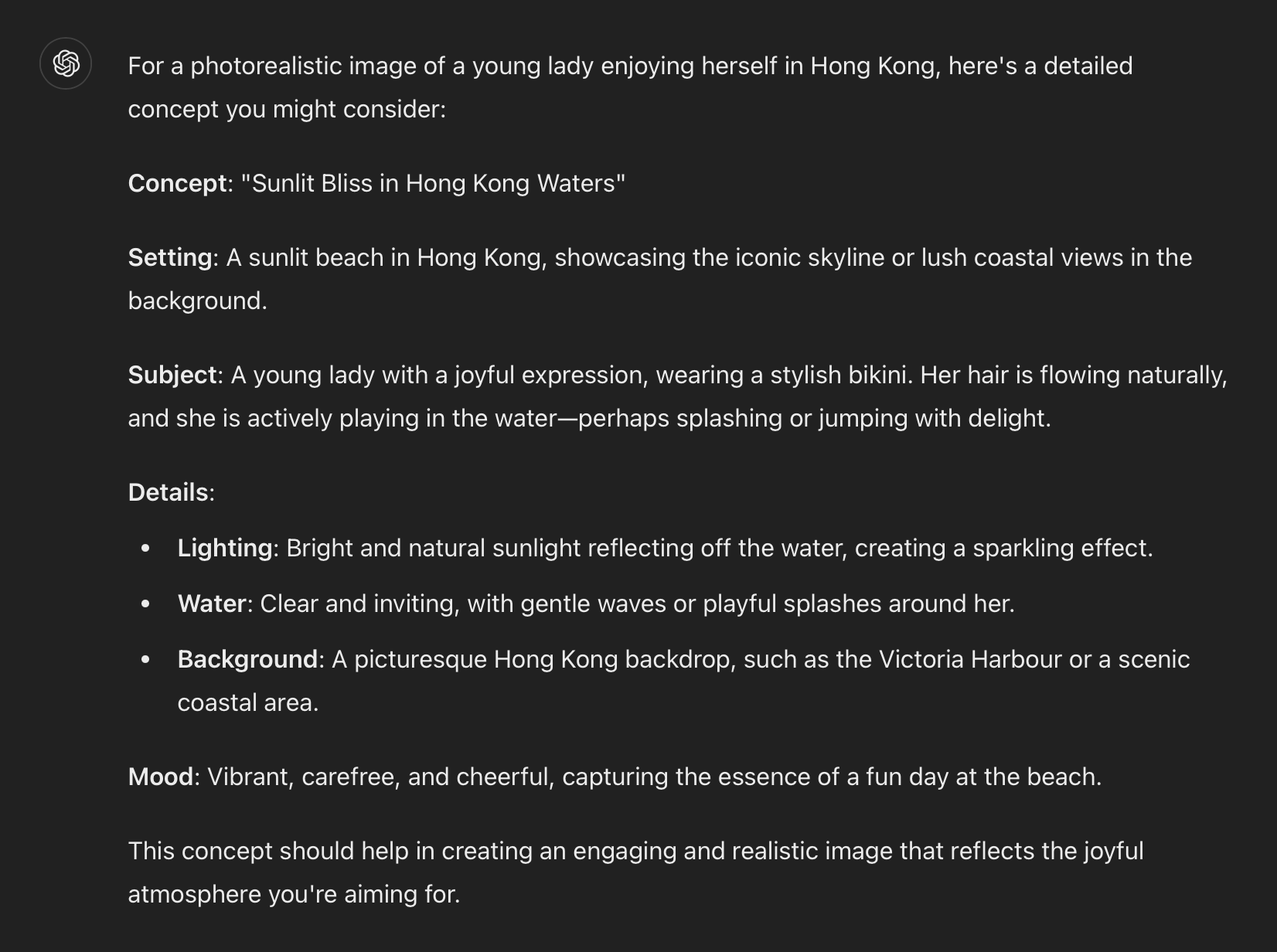Exploring the Best AI Tools for Photorealistic Images
Image Credit: Jacky Lee | Art Director, TheDayAfterAI News Channel
Today’s sunny weather has inspired our AI reporter, Daisy, to invite her best friends to bask in the sunlight and enjoy a fun day at the beach. Eager to capture the perfect beach moment, Daisy turned to text-to-image AI tools for help in generating new friends. The mission was simple: create a lively and joyful image of a young ladies enjoying the water. The results were intriguing and varied, showcasing the capabilities and limitations of different AI image generators.
ChatGPT 4’s Creation: A Picture-Perfect Beach Day
Daisy’s first request to ChatGPT 4 resulted in a photorealistic image of a young Asian woman in a stylish bikini, happily playing in the water. The image featured a vibrant setting with clear blue water and a bright sky, capturing the essence of a perfect beach day. The details were impressive: natural smiles, beautiful water splashes, and no issues with fingers or ears. The image, at 1024 x 1024 pixels, was vivid, well-lit, and beautifully contrasted, making it an excellent representation of AI’s potential in photorealistic image generation.
Image Credit: Jacky Lee | Art Director, TheDayAfterAI News Channel
ChatGPT 4o’s Attempt: Natural and Realistic
Next, Daisy turned to ChatGPT 4o, which produced another image of a pretty young Hong Kong lady in a stylish bikini, enjoying the beach. The background featured a clear blue sky, gentle waves, and a sandy shoreline, creating a bright and sunny scene. While the image looked very much like a real photo, with natural lighting and well-rendered fingers, it had some minor flaws. The lady’s ear appeared slightly unnatural, and the hair over her left shoulder wasn’t continuous. Despite these issues, the overall quality was commendable, and the image had a more realistic feel compared to GPT 4’s vividness.
Image Credit: Jacky Lee | Art Director, TheDayAfterAI News Channel
NightCafe’s Dreamshaper XL Lightning: A Mixed Bag
Daisy’s curiosity led her to NightCafe’s Dreamshaper XL Lightning model, using the “Realistic Anime” style. Unfortunately, this image had several problems: the girl had an extra right hand, and her left fingers were distorted. These anatomical errors significantly detracted from the image’s quality, highlighting the challenges some AI models face in generating photorealistic images. Despite aiming for a realistic anime look, the result was far from satisfactory compared to the outputs from OpenAI’s models.
Image Credit: Jacky Lee | Art Director, TheDayAfterAI News Channel
A Closer Look: Comparing the Three Images
Upon closer inspection, it became evident that NightCafe’s image lacked the detail and quality seen in the images generated by ChatGPT 4 and 4o. While all three tools were used to create images of young ladies enjoying the beach, the differences in quality were stark. ChatGPT 4 produced the most vibrant and lively image, while ChatGPT 4o offered a more natural but slightly flawed photo. NightCafe, on the other hand, fell short in terms of anatomical accuracy and overall detail.
ChatGPT 4o Mini: Conceptual Guidance
Daisy also tried asking ChatGPT 4o Mini to create a beach image, but it provided conceptual guidance instead of generating an image. The concept described a joyful young lady on a sunlit beach in Hong Kong, with bright sunlight reflecting off the water and a picturesque Hong Kong backdrop.
While 4o Mini’s detailed concept was excellent, it could not generate the image directly. Instead, it suggested using AI art generators like DALL-E or hiring a professional photographer to bring the vision to life. This indicates that DALL-E 3 functionality is not embedded within 4o Mini.
The Verdict: OpenAI Leads in Photorealism
Although this experiment was conducted informally and without rigorous testing, it appears that OpenAI’s models are superior in generating photorealistic images. ChatGPT 4’s vivid and well-contrasted image stood out, while ChatGPT 4o’s more natural photo also showed promise despite minor flaws. NightCafe’s attempt, however, highlighted the limitations some AI models face in achieving realistic results. This suggests that for those seeking high-quality, photorealistic images, OpenAI’s tools might be the better choice.
Your Opinion Matters: What Do You Think?
We invite you to share your thoughts and opinions on this informal comparison. Do you agree that OpenAI’s tools are better for generating photorealistic images, or have you had different experiences with other AI image generators? Your feedback is valuable in understanding the strengths and weaknesses of various AI models, helping us all navigate the evolving landscape of AI-driven content creation and marketing. Join the conversation and let us know your perspective on the best AI tools for creating stunning and realistic images.






